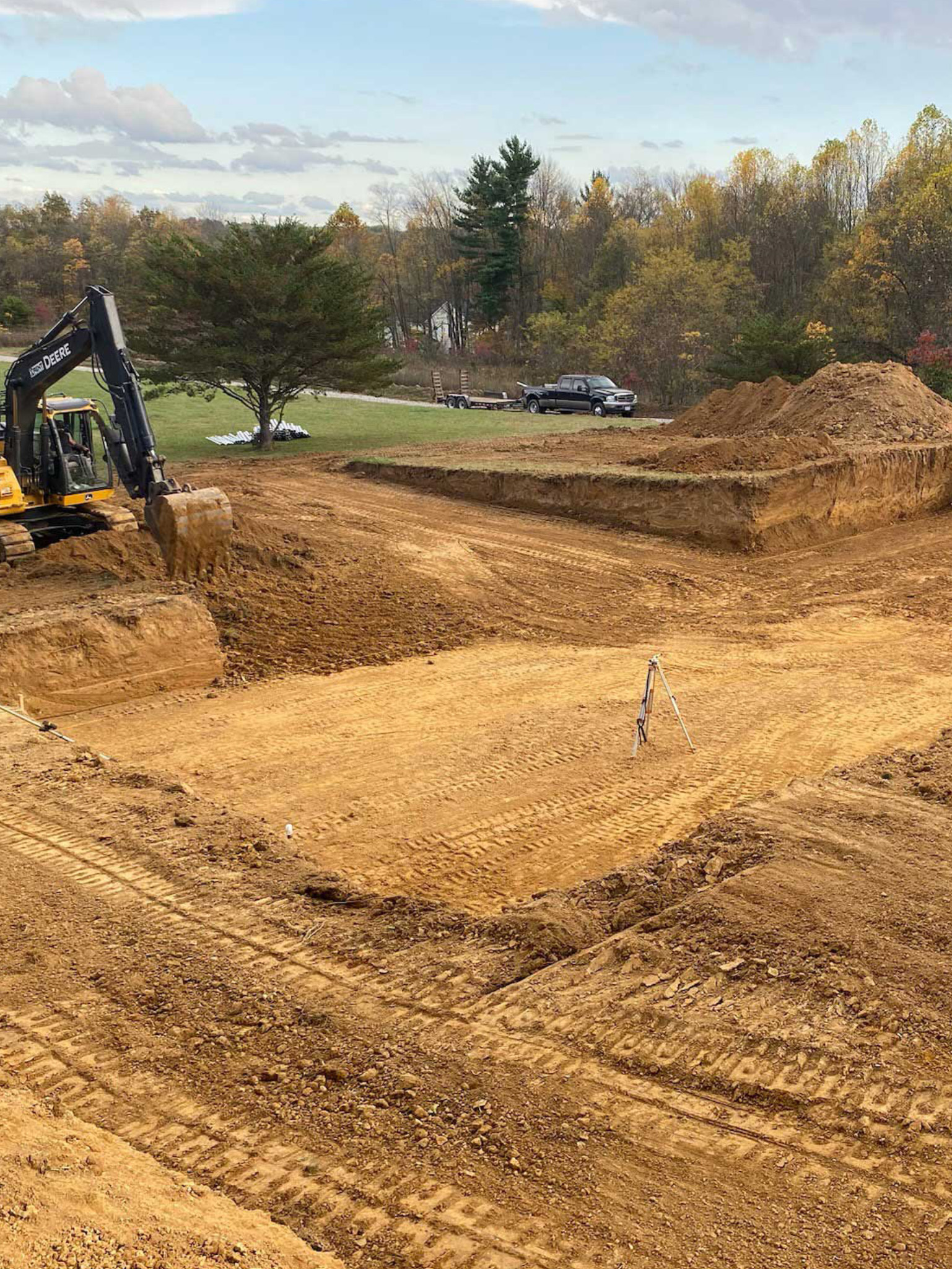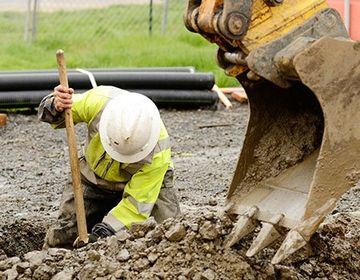Excavating Ohio - Leading Excavation Specialists for Ohio Projects
Excavating Ohio - Leading Excavation Specialists for Ohio Projects
Blog Article
Revealing the Art of Excavation: Pro Tips for Safe and Efficient Excavating
As soil is transformed and earth is relocated, the complexities of excavation disclose themselves, demanding a keen understanding of devices, dirt structure, safety and security procedures, and ecological considerations. The expertise required to browse these elements properly can imply the distinction between an effective excavation project and a prospective catastrophe.
Value of Correct Tools
To guarantee the safety and security and efficiency of any kind of excavation project, using the ideal tools is extremely important. Excavation jobs differ in extent and complexity, ranging from small domestic landscape design tasks to large building and construction tasks.
These flexible makers come in different dimensions to match different project needs. Tiny excavators are perfect for smaller sized jobs, while larger excavators deal with extra extensive jobs successfully.
Apart from excavators, other vital devices includes dump vehicles, trenchers, and excavators. Dispose trucks are necessary for getting rid of and transferring excavated materials, while trenchers are utilized for digging deep and slim trenches. Excavators stand out in jobs that need pressing huge amounts of dirt or debris. By buying the appropriate devices, excavation tasks can be completed safely, on schedule, and with precision.
Understanding Dirt Make-up
A detailed grasp of soil make-up is essential for carrying out excavation tasks with precision and safety. Comprehending the different types of soil is vital as it directly influences excavation approaches, tools option, and total job performance.
Sand particles are the largest and provide excellent drain but use little cohesion. Silt bits are smaller than sand however bigger than clay, using moderate drainage and communication. Clay fragments are the tiniest and offer high cohesion but bad water drainage. Organic matter, such as decomposing plant material, impacts dirt fertility and stability.
Before starting excavation, carrying out dirt tests to identify its make-up and characteristics is crucial. This info helps in picking the ideal devices, executing safety actions, and developing excavation approaches tailored to the specific soil conditions - septic ohio. By understanding soil make-up, excavation specialists can boost project end results while guaranteeing safety and security and adherence to best techniques
Precaution and Procedures
Recognizing soil structure is the cornerstone whereupon precaution and procedures for excavation jobs are developed, guaranteeing the wellness of workers and the success of the endeavor. When it involves safety during excavation, there are numerous vital actions that have to be carried out to mitigate risks and avoid mishaps.
Most importantly, before any type of digging starts, a comprehensive evaluation of the site need to be carried out to identify any potential risks such as underground utilities, unstable soil problems, or neighboring frameworks that could position a threat. It is important to have a qualified individual look after the excavation process to ensure that all safety and security procedures are followed strictly.
In addition, all workers associated with the excavation has to be correctly learnt secure digging techniques and the proper procedure of tools. Personal protective tools (PPE) such as difficult hats, high exposure apparel, handwear covers, and safety boots should be worn in all times to reduce index the threat of injuries. septic ohio. Routine security meetings and toolbox talks should likewise be carried out to keep all employees notified concerning possible dangers and reinforce safe work practices. By adhering to these safety steps and procedures, excavation jobs can be completed efficiently and without event.
Effective Excavation Planning
When starting an excavation project, meticulous preparation is important to ensure effectiveness, safety and security, and successful end results. Effective excavation preparation includes several vital steps that are vital for the smooth implementation of the job. The very first step is to perform an extensive site analysis to identify any type of prospective threats, such as underground utilities or unpredictable dirt conditions. This info is vital for published here establishing a thorough excavation plan that includes security actions and risk mitigation methods.
Once the website analysis is total, the next step is to develop a clear timeline and routine for the excavation tasks. This consists of identifying the sequence of jobs, devices demands, and workforce allotment. Proper scheduling helps prevent hold-ups and ensures that the project remains on track.

In addition, interaction among all team participants is vital during the planning stage. Clear regulations, regular updates, and reliable sychronisation are vital for a successful excavation task. By spending effort and time in meticulous planning, excavation teams can considerably enhance performance, lessen dangers, and accomplish successful results.

Managing Ecological Considerations
With increasing focus on environmental sustainability in building and construction techniques, handling ecological considerations has actually come to be a vital facet of excavation jobs. Excavation activities have the prospective to impact the surrounding setting via soil disintegration, sediment drainage, environment disruption, and contamination of water sources. To alleviate these threats, it is vital to carry out ideal practices that prioritize environmental security.

In addition, proper waste administration is vital to avoid soil and water contamination. Applying treatments for the disposal of unsafe products, recycling of waste products, and decreasing making use of dangerous chemicals can substantially published here decrease the ecological effect of excavation projects. By incorporating these methods into excavation preparation and execution, building and construction business can guarantee that their tasks are not just risk-free and productive but additionally environmentally responsible.
Final Thought
Finally, understanding the art of excavation requires a thorough understanding of appropriate equipment, soil make-up, precaution, and efficient planning. By complying with these standards and thinking about ecological elements, excavations can be performed safely and effectively. It is crucial to focus on safety and security and productivity in every excavating project to make sure effective outcomes.
As soil is transformed and earth is moved, the intricacies of excavation expose themselves, requiring a keen understanding of tools, soil make-up, security methods, and environmental factors to consider.To guarantee the safety and security and effectiveness of any type of excavation task, utilizing the suitable tools is vital.A comprehensive grasp of dirt composition is essential for implementing excavation projects with accuracy and safety and security. Understanding the various kinds of soil is vital as it directly impacts excavation techniques, tools selection, and general project effectiveness. By comprehending dirt structure, excavation specialists can enhance job end results while ensuring security and adherence to ideal practices.
Report this page